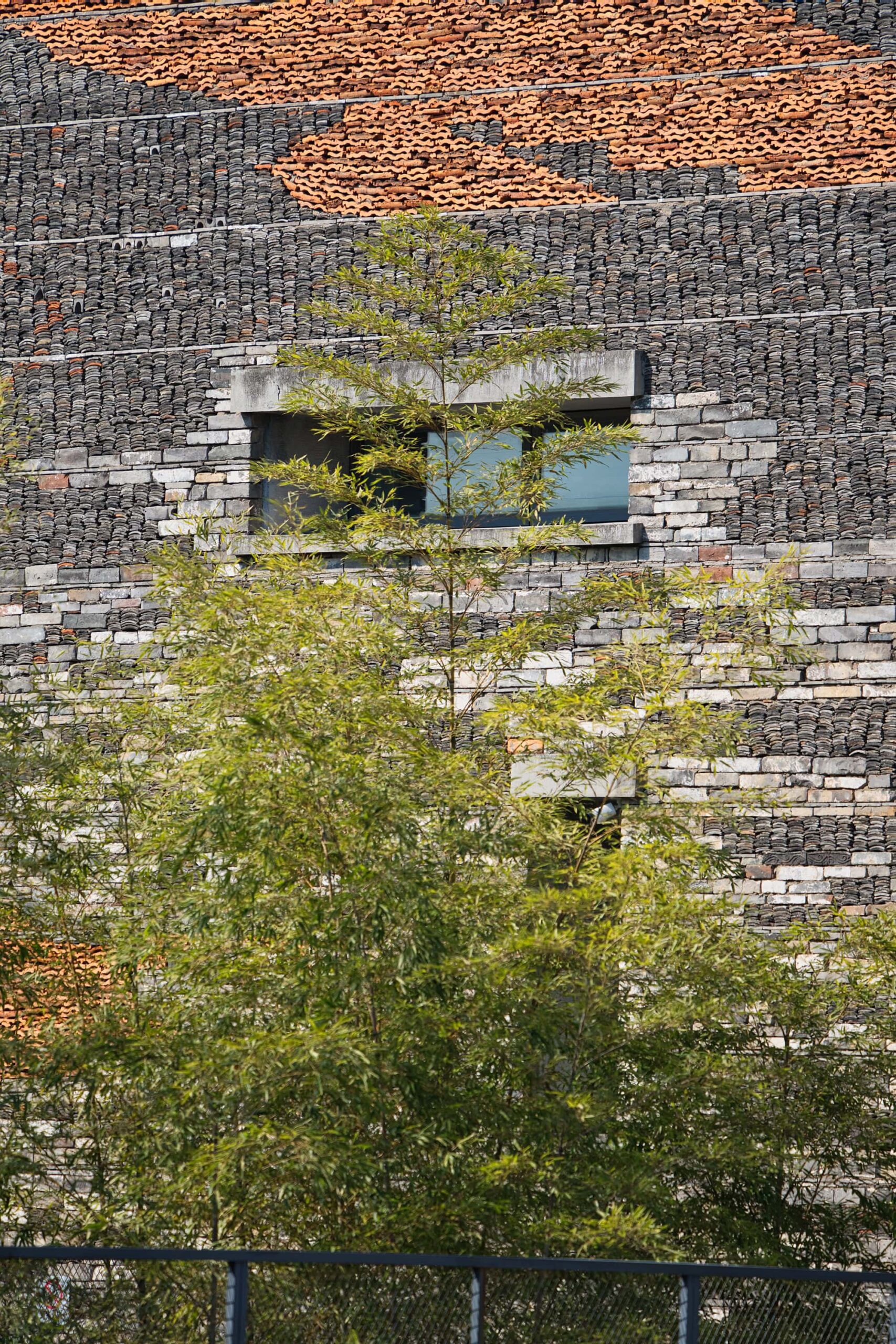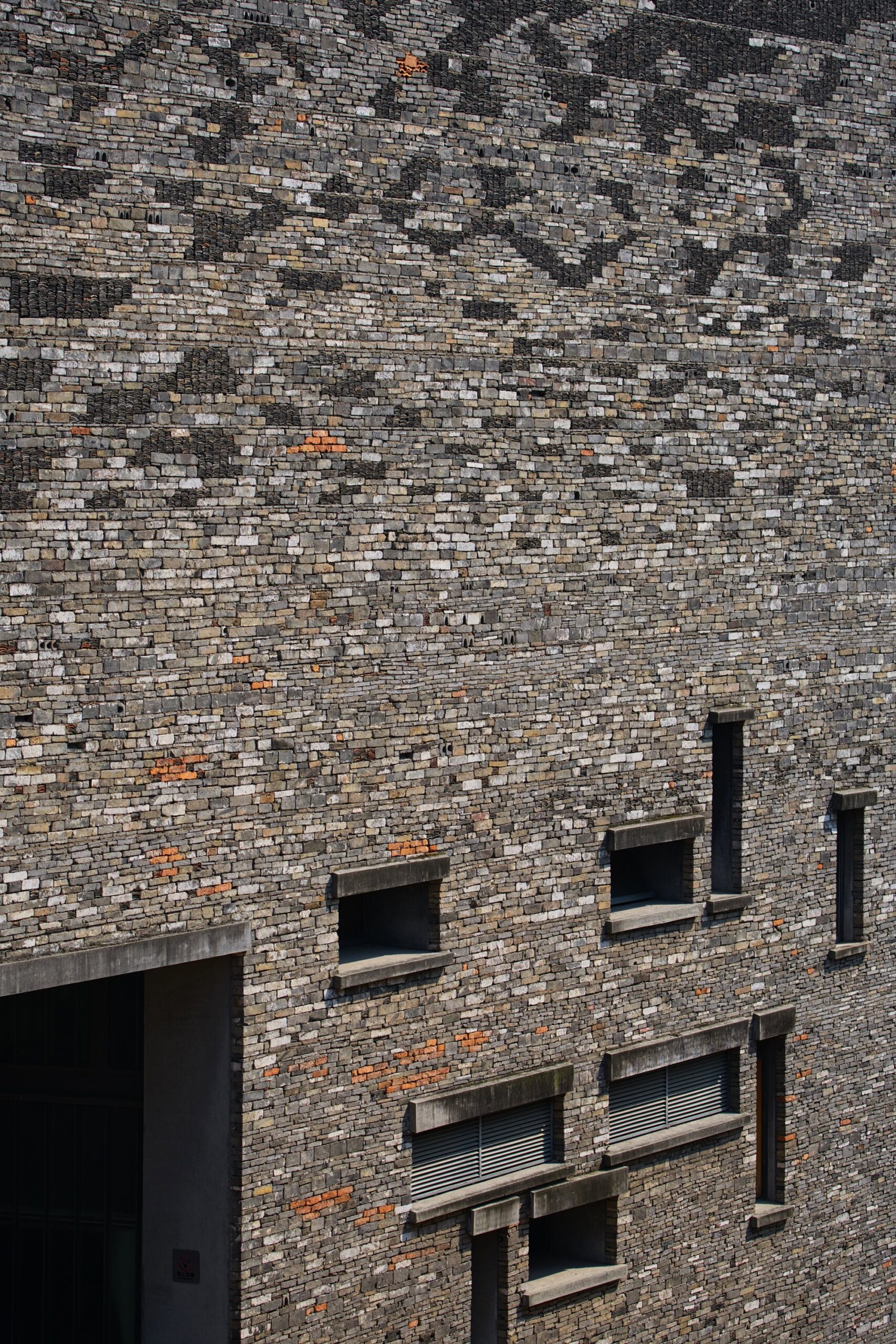Travel & Planning for New Destination Released. Free Shipping to Most Countries Around the World.
Free Shipping to Most Countries Around the World.
This is another masterpiece by Wang Shu, China’s Pritzker Architecture Prize winner. Inspired by Fan Kuan’s “Travelers Among Mountains and Streams” from the Northern Song Dynasty, the Ningbo Museum features a dark gray exterior with distinct man-made cutting marks forming a polygonal structure that blends seamlessly with its surroundings in an understated yet profound way. The Ningbo Historic Museum emphasizes designs that incorporate local characteristics and folk customs, avoiding rigid planning in favor of using local materials to showcase adaptability to its environment. The building is constructed with millions of recycled bricks and tiles collected from the old town’s urban renewal projects, hand-laid by 50 craftsmen and wrapped with bamboo-formed concrete. The building itself has thus gathered a century of history, becoming a living historical exhibit. Its outer contours highlight the regional features of “mountains,” “water,” and “ocean.” The base has a regular rectangular shape, but as it rises, the building gradually splits and tilts slightly, evolving into an abstract mountain-like form. A body of water on the north side of the museum resembles a distant pool cradling this enormous structure that seems to have just come ashore.
From a distance, Wang Shu’s Ningbo Museum looks remarkably like a large square box. The south façade is a standard two-dimensional plane with steps extending from a breach toward the second level. The split upper section of the building forms an open platform, offering views of the distant urban pulse through variously shaped openings. The vintage architectural exterior paired with its futuristic shape resembles a distinctive art installation, no wonder it was chosen as a filming location for “The Three-Body Problem.” The interior space presents a forking, multi-path labyrinthine structure, encompassing almost any visiting route you could imagine.
Ningbo is a city with deep historical deposits and heritage, yet it previously lacked a comprehensive museum reflecting the city’s historical context. Although the Ningbo Museum was initially established at the city exhibition hall in 1981, the selection of a new site and project approval didn’t happen until November 2004. As a key cultural project of the municipal government, the museum received a total investment of 250 million yuan, with a building area of 30,000 square meters on 60 mu of land. After more than four years of construction, it officially opened in December 2008. To integrate resources and avoid unnecessary waste of human, material, and financial resources, the Ningbo History Museum was jointly invested by the Ningbo Municipal Government and Yinzhou District Government, located in Yinzhou District, and is jointly managed and used by both levels of government, achieving shared resources and platforms.
The Ningbo Museum currently houses approximately 60,000 collections and features seven exhibition halls. The first floor has two special exhibition halls that periodically introduce works by renowned artists. Recent special exhibitions such as “Same Source, Different Flows—Qing Dynasty Export Art,” “Divine Craftsmanship—Huizhou Ancient Architectural Culture Exhibition,” and “The Great Longevity—Pan Tianshou Paintings and Calligraphy from Heilongjiang Provincial Museum” are all well worth seeing. Notable regular exhibits include daily handicrafts and vessels from the Hemudu period, bronze yue axes from the Warring States period, bronze mirrors from the Eastern Han Dynasty, and ceramics from the Three Kingdoms period.
Visitor Information:
Tuesday to Sunday: 9:00-17:00 (Closed on Mondays)
Reservation: Search for “Ningbo Museum” on WeChat to make a reservation, and bring your ID card. Luggage storage is available if needed.
Cost: Free
Recommended visiting time: 2-3 hours
Dining: There’s a café on the third floor offering light meals












We use cookies to optimize your experience, analyze usage, and personalize content. Your continued browsing indicates consent to our cookie usage and the sharing of site interaction data with our marketing and analytics partners.